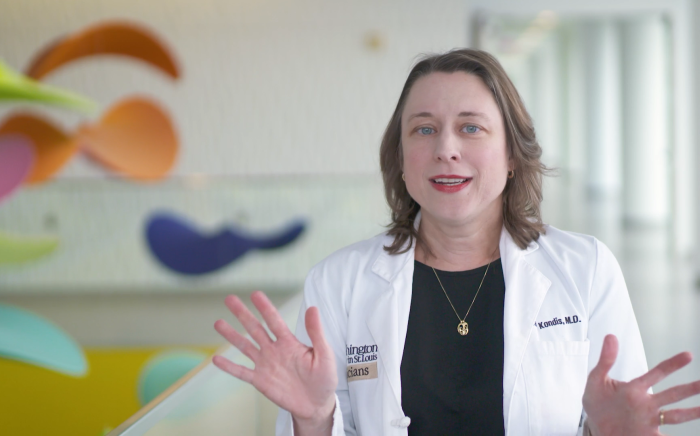Overview
Herpangina is a very common illness in children. It causes small blister-like bumps or sores (ulcers) in the mouth. They are usually in the back of the throat or the roof of the mouth.
Herpangina is usually seen in children between the ages of 3 and 10. It is seen most often in the summer and fall.
How to say it
her-pan-JEE-nuh
Causes
Herpangina is caused by a virus. The most common viruses that cause it are:
- Coxsackie viruses A and B
- Enterovirus 71
- Echovirus
Symptoms
Each child may feel symptoms a bit differently. But below are the most common symptoms of herpangina:
- Blister-like bumps in the mouth, usually in the back of the throat and on the roof of the mouth
- Headache
- Sudden fever
- High fever, sometimes up to 106°F (41°C)
- Pain in the mouth or throat
- Drooling
- Decrease in appetite
Diagnosis
Your child’s healthcare provider can diagnose herpangina with a complete health history and physical exam of your child. The sores look different from other sores and usually easy to identify.
Treatment
Treatment will depend on your child’s symptoms, age, and general health. It will also depend on how severe the condition is.
The goal of treatment is to help ease symptoms. Since herpangina is a viral infection, antibiotics won’t work. Treatment may include:
- Drinking more fluids
- Taking acetaminophen for any fever
- Taking oral pain relievers, such as lozenges
- Eating a bland diet, such as cold milk and ice cream. Your child should stay away from acidic and spicy foods.
Most children with the illness feel better in about a week. It's important that your child drinks enough fluids to prevent getting dehydrated.
Prevention
Proper handwashing can help prevent the illness from being spread to other children.
Key Points
- Herpangina is a very common illness in children.
- It causes small blister-like bumps or sores (ulcers) in the mouth.
- It is caused by a virus. The most common ones are coxsackie viruses A and B.
- Treatment may include fluids and medicine for fever and pain.
- Proper handwashing can prevent the spread of herpangina.
Next Steps
Tips to help you get the most from a visit to your child’s healthcare provider:
- Know the reason for the visit and what you want to happen.
- Before your visit, write down questions you want answered.
- At the visit, write down the name of a new diagnosis, and any new medicines, treatments, or tests. Also write down any new instructions your provider gives you for your child.
- Know why a new medicine or treatment is prescribed and how it will help your child. Also know what the side effects are.
- Ask if your child’s condition can be treated in other ways.
- Know why a test or procedure is recommended and what the results could mean.
- Know what to expect if your child does not take the medicine or have the test or procedure.
- If your child has a follow-up appointment, write down the date, time, and purpose for that visit.
- Know how you can contact your child’s provider after office hours. This is important if your child becomes ill and you have questions or need advice.












